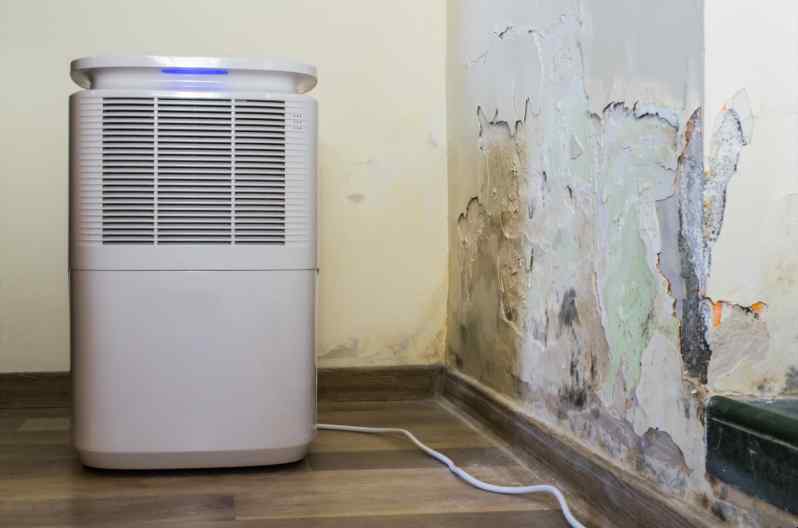Odor removal after water damage
Summary: This article will provide the steps necessary for Odor Removal from a home after it has been exposed to water damage. The steps required for the removal of these odors will be specified and include: assessing and documenting damages, dehumidifying and drying out excess moisture, applying antimicrobial solutions and sealers, painting or coating surfaces with odor-neutralizing coatings, and installing air filtration units to eliminate unpleasant odor . It is important to note that the key factor in removing musty smells caused by water damage is speed as time is your enemy as it allows potentially harmful microorganisms such as mold to grow; waiting too long before implementing proper remediation techniques can allow these detrimental organisms to flourish.
1. Get rid of musty odors caused by mildew and mold by using a dehumidifier to dry out the area
The first step to eliminate musty smells caused by water damage is to get rid of mildew and mold. This can be done by using a dehumidifier to dry out the area. It is important to note that the majority of odors are caused by microorganisms such as mold spores which can thrive in damp environments and porous materials. If these organisms are allowed to grow for too long, they will release spores into the air that pose a health risk to anyone breathing them in. To prevent this from happening it is necessary to dry all wet porous surfaces with adequate ventilation and humidity levels below 60%. It is also crucial to remove any damaged building materials during this process and clean affected areas you cant remove with a spray bottle filled with a bleach solution and scrubbing brush and baking/bicarbonate of soda, important to note that the correct safety gear is worn when cleaning anything with mold. This will go a long way to remove musty smells.
2. Remove the wet carpeting, padding, and insulation to prevent mold growth
If the water damage has resulted in the growth of mildew and mold, it is important to remove the wet carpeting, padding, and insulation. This is because these materials are an ideal breeding ground for mold and can release harmful spores into the air. In order to properly remove these materials, it is necessary to cut them out of the home and dispose of them properly. It is also important to disinfect the area where they were located before replacing them with new materials.
Repairing any water damage to the foundation, interior floors, and exterior siding is crucial because it will make it easier for your home to dry out. If these areas are not repaired correctly it can lead to carpet buckling or create an environment that allows further problems such as mold growth down the line. It is important to note that if steps are taken during this phase of water damage restoration that involve pulling up carpet tack strips or removing subfloor staples you should notify your insurance agency so they do not think you have caused damages yourself in order to receive a settlement.
3. Clean up any standing water with an absorbent material like cat litter or paper towels
The next step is to clean up any standing water with an absorbent material like cat litter or paper towels. This will help to reduce the amount of moisture in the environment and will make it easier for the dehumidifier to do its job. It is important to continue to monitor the humidity levels in the home as well as the temperature, as both of these factors can influence the rate of evaporation.
Once all of the standing water has been removed, it is necessary to apply an antimicrobial solution and sealer to all wet surfaces. This will help to kill any remaining bacteria or mold and will help to prevent them from growing back. It is
4. Use a fan for ventilation if there is no window nearby
If there is no window nearby then it is necessary to use a fan for ventilation. This will help to circulate the air and will speed up the drying process. It is important to keep in mind that fans should never be used in place of dehumidifiers as they will not be effective in removing moisture from the air.
5. Place air fresheners in the room to mask odors until it can be aired out thoroughly
In some cases, the odors caused by water damage can be too strong for a dehumidifier to remove. In these situations, it is necessary to place air fresheners in the room to mask the odors until it can be aired out thoroughly. It is important to use air fresheners that are specifically designed for this purpose as they will be more effective than regular air fresheners.
6. Call professionals if you have extensive damage that needs professional help
If you have extensive damage that needs professional help, it is best to call a professional mold remediation company like WDP They will have the experience and equipment necessary to properly restore your home. Give us a call for a free estimate, available 24/7.
7) Consider replacing your carpeting after removing all of the moisture so it doesn’t happen again!
After removing all of the moisture it is important to consider replacing your carpeting. This is because if the water damage was severe enough, it can cause the carpeting to buckle or create an environment that allows for future problems such as mold growth. It is important to note that if you do decide to replace your carpeting, you should notify your insurance agency so they do not think you have caused damages yourself in order to receive a settlement.
Conclusion
Water damage restoration can be very complicated. It is important to be well prepared in the event that something like this happens so it doesn’t happen again! Or call us at 714-912-1958 for a free estimate on any upcoming water damage projects!




